EV vs Hybrid vs Diesel comparison: Which midsize SUV is best?
We pit the Toyota Hyryder hybrid against the Kia Seltos diesel and MG ZS EV, to find out which is the most economical over long distances.
Published on May 30, 2024 05:26:00 PM
63,103 Views
Follow us on

ZS EV rear seat comfort is compromised due to under-floor battery that raises the height (left); Seltos has the comfiest and widest back seats (right).
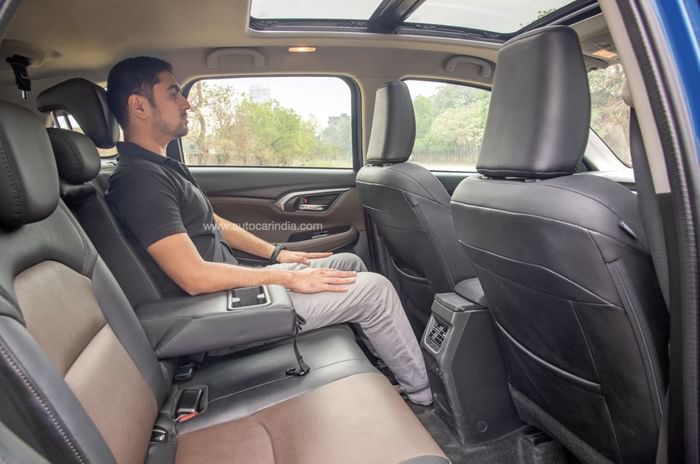
Urban Cruiser Hyryder's cabin feels narrow and heeadroom for six footers is tight.
A reader from Mumbai, who frequently drives between Mumbai and Pune, and averages 2,500km per month, wrote to us seeking a comfortable and economical automatic SUV within a budget of Rs 25 lakh (on-road). While the answer to this question might seem straightforward, it got our editorial team to ponder whether running costs should be the only deciding factor or whether comfort and the overall ownership experience must be given equal weightage before suggesting options.
Nikhil Bhatia opined that nothing can beat the frugality of an EV, and the MG ZS EV, with its practical nature and long battery range is a great option, especially after its recent price cut. And because it gets road tax waivers, its on-road price is in the same ballpark as its ICE rivals. Jay Patil insisted that a good old diesel-automatic midsize SUV like the Kia Seltos or Hyundai Creta would be ideal long distance tourers. I suggested that the Toyota Hyryder or Maruti Grand Vitara on account of their efficient hybrid powertrains.
Toyota Hyryder vs Kia Seltos vs MG ZS EV: powertrain, performance and interior
To settle this debate, we devised a plan. We decided to drive the MG ZS EV, Kia Seltos diesel-automatic (also representing the Hyundai Creta) and Toyota Urban Cruiser Hyryder hybrid (also representing the Maruti Grand Vitara), from Mumbai to Pune and back in a single day – a distance of approximately 350km – to experience their comfort, efficiency and performance, to arrive at a consensus and give this reader a conclusive reply.

Before setting off, to keep things consistent, we tanked up the cars – in the MG’s case fully charged its batteries – kept the cars in their normal or city drive mode, and set climate control to 22.5 degrees in full-automatic mode.
Nikhil didn’t stop praising the MG ZS EV’s refinement; after all with no grumble from a combustion engine, it munched miles in complete silence. In addition, it also packed in the strongest performance of the bunch, with its electric motor producing 177hp and 280Nm of torque. Its flat-out 0-100kph acceleration time of 8.4 seconds is quick by any standards. And what makes the drive experience even more impressive is the motor’s instant responses and its smooth and linear build up of speed.
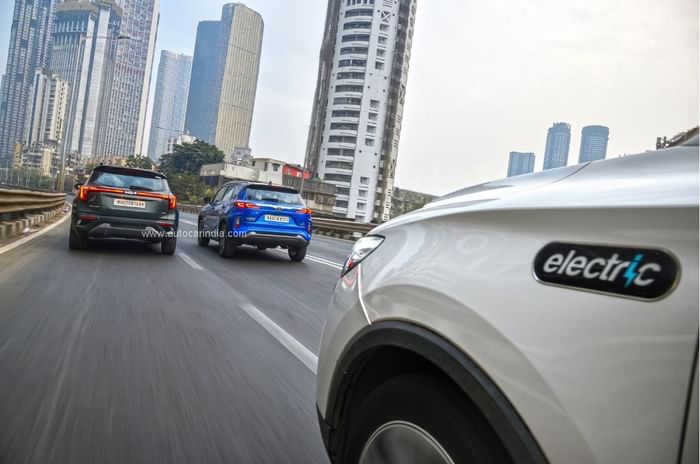
Also likeable is its cabin, which exudes a European design influence, with high quality materials and user-friendly ergonomics. However, its flat seats aren’t comfy and what adds to this is the raised rear cabin floor; the battery below forces you to sit in a knees-up position. This seating posture is something common to most EVs so it’s worth noting this when planning your purchase. Also lacking is front seat ventilation as well as other modern niceties that the others pack in.

The Hyryder’s responsive hybrid powertrain makes light work of cruising. Its three-cylinder 1.5-litre petrol engine is quick to lend support to the electric motor when required, and this transition, while on the move, is pretty seamless. The increments in speeds are almost electric-like rapid, however, if you use a heavy foot, power delivery tapers rather quickly, and its powertrain creates an unpleasant racket, coaxing you to adopt an easy-going driving style. And when you do, it often switches to full-EV mode in order to maximise efficiency.
Toyota has nicely dressed up the Hyryder’s interiors with soft-touch materials and a brown colour scheme with silver highlights to lift its appeal. However, the quality of plastics isn’t up there with the others, and there are several bits shared with budget Marutis, which isn’t expected in a car of this price. Also, while it has a lengthy equipment list, the execution isn’t perfect – its 360-degree camera quality is poor and its touchscreen is buggy. Further, its firm seat cushioning and lack of thigh support don’t make its front seats ideal for long journeys. Boot space is also compromised due to the hybrid’s battery placement. Another example of a comfort or convenience factor affected by the choice of powertrain.
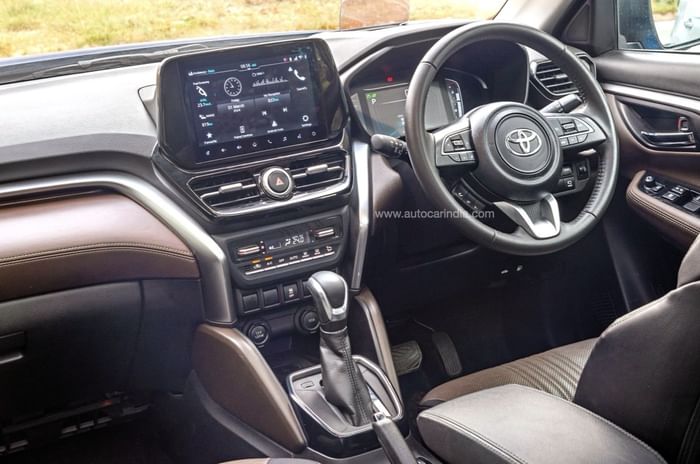
Jay, however, didn’t have any such powertrain-induced inconveniences. He was far more comfortable in the plush seats of the Kia Seltos, pampered by a generously equipped cabin. Its high quality interiors boast of top levels of fit-finish that one would expect at this price point and the Kia also scores high on space and practicality, with the most space and the largest boot on offer.

But what of the powertrain itself? As far as diesels go, the 116hp, 1.5-litre unit is one of the smoothest, most refined and most efficient units around. With torque in abundance and having six gears to boot, it spins at a relatively low 2,000rpm in top gear while cruising steadily, and for the most part, its meaty mid-range punch facilitates highway overtakes without much effort. However, this isn’t a free-revving or enthusiastic powerplant; beyond 4,000rpm power delivery tapers and the diesel clatter significantly amplifies inside the cabin. The Seltos diesel is the slowest when it comes to flat-out acceleration, but it isn’t too far behind the Hyryder hybrid’s times.
Toyota Hyryder vs Kia Seltos vs MG ZS EV: efficiency and running costs
It isn’t a secret that a hill climb warrants significant energy and puts a serious load on vehicles to haul their mass against gravity. Expectedly, it was the heavy MG ZS EV which showed the sharpest efficiency drop. It consumed 8 percent of its battery and ate away 28km of range, to cover a distance of 12km on the winding Khandala Ghat (hill); translating to an efficiency of just 2.9km/kWh. The Hyryder also showed a decrease on the indicated fuel efficiency reading on the MID, wherein it fell from a constant 23kpl on the flat expressway to 20kpl after the hill climb. The diesel’s displayed fuel efficiency drop was the least: from 17.4kpl to 16.5kpl.

Upon reaching Pune, Nikhil broke out of the convoy and was adamant that we follow him to a ‘new’ eatery that he’d recently discovered. Being an avid foodie, we found no reason to question his actions, however, he had an ulterior motive. Like a typical EV user, Nikhil had planned a lunch stop at a place with a 60kW DC fast charger nearby, so that the ZS EV’s battery could be fully charged while we grabbed lunch.
However, Nikhil’s master plan didn’t materialise as envisioned. Despite being away for lunch for over an hour, he learnt that after just 27 minutes of plugging it in, the charging session was suspended due to a technical error. As a result, the SOC had climbed from 35 to 59 percent, and the displayed travel range increased from 135km to 198km.

The journey back to Mumbai was around 175km, which included a lot of downhill driving where the EV could easily recoup charge, hence range anxiety wasn’t something to worry about. Expectedly, the drive back to Mumbai was rather uneventful, but what followed was a revelation.
After completing a Mumbai-Pune-Mumbai journey of 344km, it was time for a final refill. The Kia Seltos consumed 19.4 litres of diesel (Rs 94.3 per unit), which translated to a fuel efficiency of 17.7kpl and a running cost of Rs 5.3 per km. The Toyota Hyryder hybrid’s staggering efficiency of 25.1kpl, meant it consumed 13.7 litres of petrol which translated to a running cost of Rs 4.2 per km.

Since we only used public chargers to calculate the MG ZS EV’s cost, which cost us Rs 24.8 per unit for the 53.7kWh of total energy it consumed, the overall efficiency turned out to be 6.4 km/kWh, and its running cost translated to merely Rs 2.2 per km. Of course, using a home charger, the cost of charging can be lower still.
Toyota Hyryder vs Kia Seltos vs MG ZS EV: verdict and price
If you only take running and maintenance costs into consideration, an electric vehicle comes on top. What’s more, the MG ZS EV has performance aplenty, range is respectable and it is reasonably practical too. It could do with more comfort and convenience features, but an EV comes with infrastructure-related challenges – for now at least – especially due to the limited functional DC fast chargers, which could dissuade long distance tourers.
A hybrid straddles both worlds; on one hand, fuel efficiency is exceptional and as a result running costs are much lower than any equivalent petrol or diesel offering, and on the other, having a petrol heart and charging system overcomes the challenges associated with grid charging. Also, the Toyota Hyryder is an able cruiser with confidence-inspiring driving dynamics, and a well-equipped cabin. However, while it is a competent offering in isolation, in this company, it isn’t the most comfortable on account of its seats. Its small boot also limits practicality that’s typically needed on longer commutes.

A blurry future for diesel vehicles in the country could further be a deal-breaker for some buyers. However, if you are still open to a diesel, then you must factor this in; the diesel’s running cost per kilometre is the highest and its upkeep costs would be higher, so the Seltos isn’t the most economical to run, but its upfront purchase cost is lower to begin with; by Rs 21,000 to the Hyryder hybrid and Rs 4 lakh to the MG ZS EV Exclusive (as tested). The Kia Seltos diesel automatic also feels the most sophisticated with impressive interiors, comfortable seats, good space and practicality, and it’s also the best equipped.

So in the final reckoning, which is the ideal economical long distance runner. While the electric MG is outright the cheapest to run, its higher purchase cost and charging infrastructure-related compromises limit its appeal and while the hybrid Toyota does away with the charging problem it’s not the nicest to drive here and has its own packaging compromises. And that’s how the diesel automatic Seltos takes the lead. As a package, it’s hard to fault with and has no compromises to balance, so for someone in the market primarily for a long distance cruiser that is comfortable and frugal, this is the one we’d recommend. For now.
Also see:
Toyota Hyryder vs Kia Seltos vs MG ZS EV comparison video
Copyright (c) Autocar India. All rights reserved.











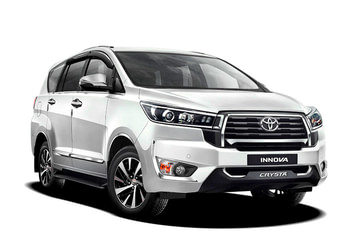
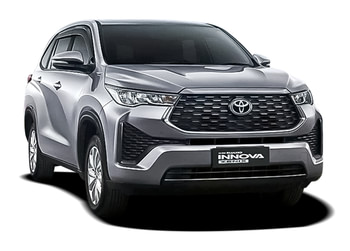


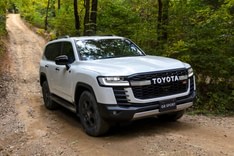



Comments
Member Login
Personal Details
No comments yet. Be the first to comment.